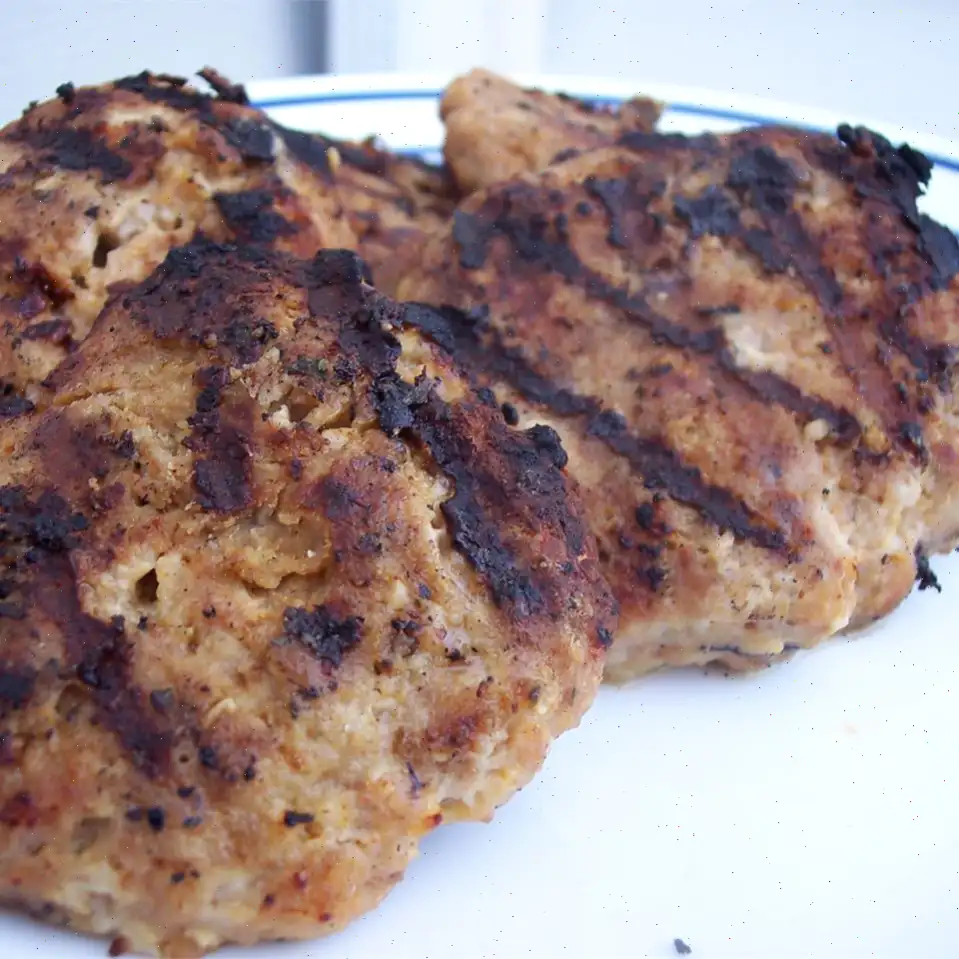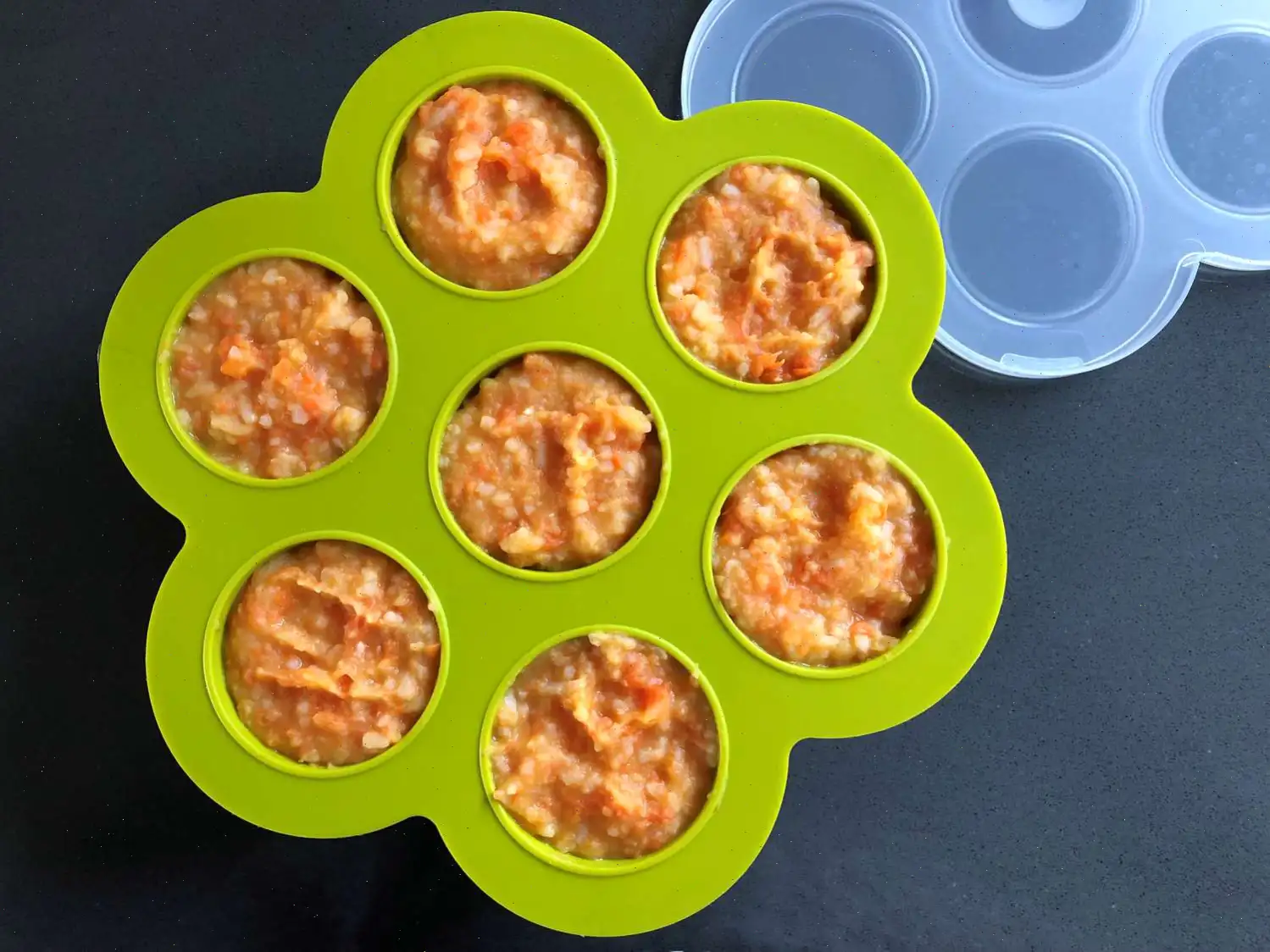
Roasted Cauliflower Steaks With Chimichurri Recipe
Ingredients
Chimichurri Sauce
- 1/2 cup finely chopped flat-leaf parsley
- 1/4 cup olive oil
- 2 tablespoons red wine vinegar
- 2 cloves garlic, minced
- 1/2 teaspoon red pepper flakes
- 1/2 teaspoon dried oregano
- Salt to taste
Cauliflower
- 2 heads cauliflower
- 1 1/2 teaspoons garlic salt
Directions
Step 1: Preheat the oven to 400F (200C). Line a baking sheet with parchment paper.
Step 2: In a bowl, combine the chopped parsley, olive oil, red wine vinegar, minced garlic, red pepper flakes, oregano, and salt. Stir well and set aside.
Step 3: Remove the tough bottom leaves from the cauliflower heads, ensuring the stems remain intact.
Step 4: Place the cauliflower heads on a cutting board with the stem side facing up. Cut vertically on both sides of the stem to remove the loose florets. Next, slice each cauliflower head vertically through the stem into 1 to 1 1/2-inch thick "steaks". Discard any small remaining leaves.
Step 5: Place the cauliflower steaks on the prepared baking sheet. Brush both sides with olive oil and sprinkle with garlic salt.
Step 6: Roast in the preheated oven for 25 to 30 minutes, flipping halfway through, until the edges are golden brown and the cauliflower is tender.
Step 7: Once roasted, transfer the cauliflower steaks to a serving platter. Spoon the prepared chimichurri sauce over the top of the steaks and serve.
Nutrition Facts
Per Serving: 312 Calories
- Total Fat: 28g (36% Daily Value)
- Saturated Fat: 4g (20% Daily Value)
- Cholesterol: 0mg (0% Daily Value)
- Sodium: 787mg (34% Daily Value)
- Total Carbohydrate: 13g (5% Daily Value)
- Dietary Fiber: 7g (25% Daily Value)
- Total Sugars: 6g
- Protein: 6g (11% Daily Value)
- Vitamin C: 135mg (150% Daily Value)
- Calcium: 63mg (5% Daily Value)
- Iron: 2mg (9% Daily Value)
- Potassium: 462mg (10% Daily Value)
* Percent Daily Values are based on a 2,000-calorie diet. Your daily values may be higher or lower depending on your calorie needs.
Note: Nutrient information is based on available data and may vary. Consult a dietitian for personalized recommendations.

History and Origin
The dish of roasted cauliflower steaks with chimichurri draws inspiration from two very distinct culinary traditions. The cauliflower steak is a modern, plant-based take on traditional meat cuts, becoming popular in recent years as a versatile and satisfying vegetarian main course. Chimichurri, on the other hand, has its roots in Argentina, where it is widely used as a condiment for grilled meats, especially in the beloved Argentine asado (barbecue). The combination of roasted cauliflower with chimichurri is a creative fusion, bringing together the earthy flavors of cauliflower with the bold, herbaceous tang of chimichurri sauce.
Regional Features
Chimichurri sauce hails from Argentina, though it is also widely used in Uruguay and parts of Brazil. The sauce is a staple accompaniment to grilled meats, reflecting the strong meat-centered traditions of these South American countries. It typically consists of fresh parsley, garlic, vinegar, oil, and spices such as oregano and red pepper flakes. When paired with roasted cauliflower, a vegetable often associated with Mediterranean diets, the dish takes on a global flair. The flavor profile is a blend of South American intensity and the simplicity of roasted vegetables.
Differences from Similar Dishes
While roasted cauliflower is commonly served as a side dish or as part of vegetarian meals, this recipe stands out due to the use of chimichurri. Many roasted vegetable dishes are seasoned with spices like cumin, paprika, or herbs like thyme and rosemary, but the chimichurri adds a fresh, zesty kick with its combination of vinegar and garlic. Compared to a typical cauliflower side, this dish offers more complexity and depth, elevating the vegetable into a vibrant main course or side. The addition of chimichurri also sets it apart from other vegetable steaks, such as those made with portobello mushrooms or eggplant, which often use balsamic vinegar or other dressings.
Where to Serve
Roasted cauliflower steaks with chimichurri are incredibly versatile and can be served in a variety of settings. They are perfect for a plant-based dinner, offering a hearty and flavorful alternative to meat. This dish is a great option for gatherings or special occasions, especially for guests who follow vegetarian, vegan, or gluten-free diets. In South America, chimichurri is traditionally paired with meats at barbecues, but this recipe offers a unique twist by pairing the sauce with cauliflower. You can also find it in contemporary restaurants that focus on plant-based or fusion cuisines.
Interesting Facts
- Chimichurri is often referred to as the "salsa of Argentina" and has been a part of Argentine cuisine for centuries. Its exact origins are uncertain, with various theories about whether it was brought to South America by immigrants or developed locally.
- Cauliflower has ancient roots in the Mediterranean and was a staple in Roman and ancient Greek diets. It gained widespread popularity in Europe during the 16th century.
- The concept of "steaks" made from vegetables like cauliflower is part of the modern trend to create plant-based alternatives to traditional meat dishes, gaining popularity with the rise of the vegetarian and vegan movements.
- Chimichurri is not only great on cauliflower but can also be used on grilled meats, roasted potatoes, or even as a dipping sauce for bread.








